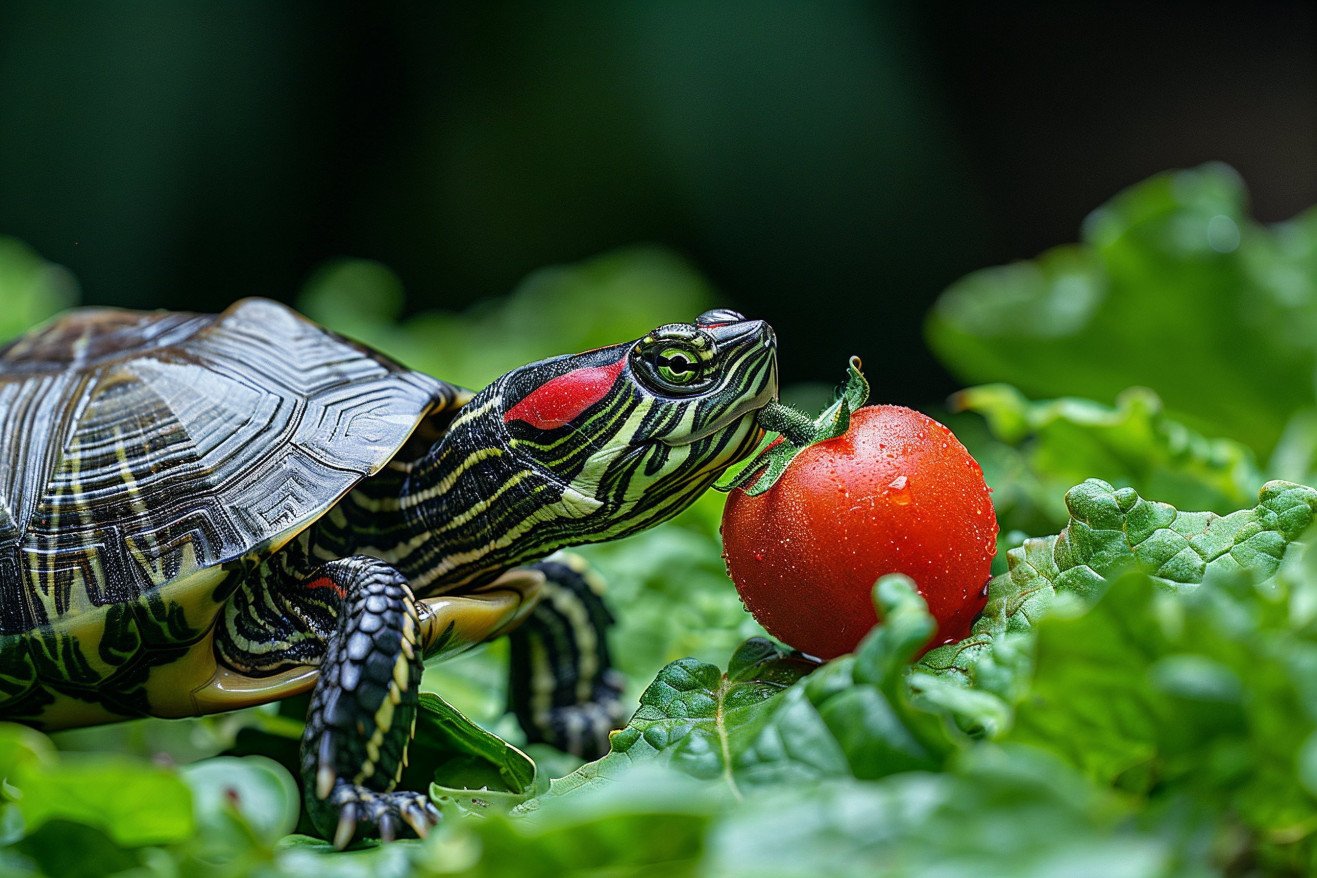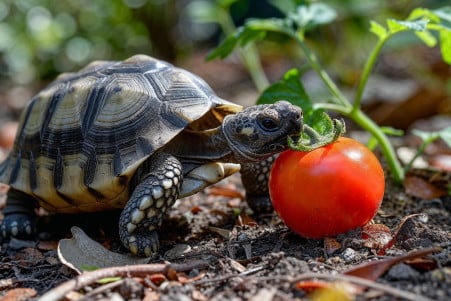Can Turtles Have Tomatoes? A Guide to Reptile Diet Staples
22 April 2024 • Updated 22 April 2024

You know that turtles are omnivorous reptiles, but are they supposed to eat fruits and vegetables like tomatoes, or are they better off with what they'd find in the wild? While turtles can eat tomatoes, it's important to do so in moderation. Tomatoes have vitamins A and C, fiber, and antioxidants, all of which can be good for your turtle.
That said, there are some things to keep in mind when it comes to feeding your turtle tomatoes and tomato-based products. This article will go over what veterinarians and research on reptile diets have to say about the nutritional value of tomatoes for turtles. By the end, you'll know the best kind of tomatoes to feed your turtle, how often to feed them, and what to look out for.
Can turtles eat tomatoes?
Nutritional Facts of Tomatoes for Turtles
Tomatoes contain several important nutrients that can help support a turtle's health. They are a good source of vitamins A and C, which VCA Animal Hospitals explains are essential for maintaining a turtle's immune system and eyesight. Tomatoes also contain antioxidants, including lycopene, that can help protect the body's cells from damage.
In terms of other nutrients, tomatoes are a good source of fiber, which can help with digestion and gut health in turtles. They also contain potassium and manganese, both of which Safarivet says are important for maintaining healthy bone structure and muscle health.
Despite the nutrients that tomatoes provide, it's important to note that tomatoes are high in sugar. Turtle OMG on Medium warns that turtles can experience digestive issues if they consume too much sugar. Therefore, it's important to make sure that turtles eat tomatoes in moderation so that they can get the nutritional benefits without the potential negative effects of consuming too much sugar.
Potential Dangers and Toxicity
While the ripe fruit of the tomato plant is safe for turtles to eat, the leaves, stems, and unripe green tomatoes contain compounds that are toxic. The ASPCA lists solanine and tomatine as the toxic compounds that can cause gastrointestinal upset, depression, and other symptoms if ingested by turtles.
Signs of tomato toxicity in turtles include vomiting, diarrhea, anorexia, depression, and neurologic signs. The Tortoise Table Plant Database notes that there is some disagreement about the exact toxic principle, with some sources listing tomatine and others listing solanine. Regardless, the leaves and unripe fruit are toxic and should not be fed to turtles.
Turtles that have ingested the toxic parts of the tomato plant should be watched closely and may need to be taken to the veterinarian in more serious cases. Gardening Know How also notes that it's important to make sure to remove all of the leaves, stems, and unripe tomatoes from the fruit before giving tomatoes to turtles.
Diet Needs for Different Turtle Species
Turtles are a varied group of animals with some being herbivores, some being omnivores, and some being carnivores. AnimalTrove explains that while most omnivorous turtles can eat tomatoes as part of a balanced diet, some species may be more inclined to a more plant-based or meat-based diet.
For example, The Observant Turtle says that box turtles and aquatic turtles can have tomatoes as a treat every once in a while, but strictly herbivorous turtles like the green sea turtle won't be able to digest and absorb the nutrients in tomatoes.
It's important to know what your turtle's species eats and to talk to a vet about their specific needs. By doing so, you can make sure you're feeding your turtle the right things, including tomatoes in moderation, to keep them healthy and happy.
How to Feed Tomatoes to a Turtle
When feeding tomatoes to a turtle for the first time, it's best to introduce them gradually and in small amounts. WikiHow explains that ripe, red cherry or grape tomatoes can be a good way to give turtles bite-sized pieces of the fruit as an occasional snack.
Tomatoes should only make up about 10-20% of an adult turtle's diet, with the rest of their food consisting of leafy greens and other vegetables. PetHelpful suggests chopping or blending tomatoes into a vegetable mixture. Since younger turtles need more protein and less fruit, tomatoes should be fed to them even less often until they reach adulthood.
Before feeding tomatoes to turtles, make sure to wash them thoroughly and remove any stems, leaves, or unripe parts. Gardening Know How explains that when prepared correctly, tomatoes can be a healthy part of a turtle's diet.
Wrapping Up: The Final Word on Turtles and Tomatoes
When fed in moderation and as part of a balanced diet, tomatoes can be a healthy and tasty addition to the menu for many turtle species. Turtle OMG suggests that tomatoes should account for approximately 10% of the total diet of an adult omnivorous turtle, with the rest of the diet consisting of leafy greens and other vegetables.
That said, it's important to know the dietary requirements of your turtle's species and to talk to a vet for personalized advice. Hepper explains that turtles have a wide range of dietary needs, from herbivores to omnivores to carnivores, and the appropriateness of tomatoes will depend on the species.
Make sure to remove any parts of the tomato plant that are toxic, like the leaves and stems, before feeding the ripe fruit to your turtle. Pet Keen warns that the leaves and unripe parts of tomatoes can be toxic to turtles because they contain compounds like solanine.
Pay attention to how your turtle reacts to tomatoes, and adjust the amount and frequency of tomatoes in their diet as needed. By doing so, you can ensure that your turtle reaps the benefits of tomatoes while minimizing the risks.


